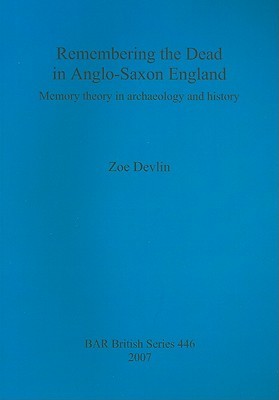
- We will send in 10–14 business days.
- Author: Zoe Devlin
- Publisher: British Archaeological Reports Oxford Ltd
- Year: 2007
- Pages: 178
- ISBN-10: 1407301446
- ISBN-13: 9781407301440
- Format: 21.1 x 29.5 x 1.3 cm, softcover
- Language: English
- SAVE -10% with code: EXTRA
Reviews
Description
In this study, the author examines the remembrance of the dead during the Anglo-Saxon period. Her work is based on monuments and remains from four cemeteries selected from the south-east of England, covering the date range from the late fifth to early tenth centuries. The first cemetery, Spong Hill, Norfolk, is a mixed cemetery dated to the late fifth to late sixth centuries and was the site of intensive excavations in the 1970s and '80s, which uncovered the whole site. The second cemetery, Edix Hill (Barrington A), Cambridgeshire, was a site for inhumation burial in the sixth and early seventh centuries. This site was partially excavated in the nineteenth century and again in the late twentieth. Although only half the cemetery was excavated and ploughing and drainage works at the site damaged some skeletons, the recovered skeletons are believed to be a representative sample of the whole cemetery. The third cemetery, Apple Down, Sussex, is another mixed-rite cemetery, which dates from the late fifth/early sixth to late seventh/early eighth centuries. The final cemetery, Rivenhall cemetery 1, Essex, has been radiocarbon-dated to the late eighth to early tenth centuries. All these cemeteries were selected on the basis of the quality of the data and of the excavation reports. Each provided a significant number of burials, usually with good survival, and the reports were thorough, with sufficient primary data to allow new analysis to be carried out.
EXTRA 10 % discount with code: EXTRA
The promotion ends in 17d.13:13:14
The discount code is valid when purchasing from 10 €. Discounts do not stack.
- Author: Zoe Devlin
- Publisher: British Archaeological Reports Oxford Ltd
- Year: 2007
- Pages: 178
- ISBN-10: 1407301446
- ISBN-13: 9781407301440
- Format: 21.1 x 29.5 x 1.3 cm, softcover
- Language: English English
In this study, the author examines the remembrance of the dead during the Anglo-Saxon period. Her work is based on monuments and remains from four cemeteries selected from the south-east of England, covering the date range from the late fifth to early tenth centuries. The first cemetery, Spong Hill, Norfolk, is a mixed cemetery dated to the late fifth to late sixth centuries and was the site of intensive excavations in the 1970s and '80s, which uncovered the whole site. The second cemetery, Edix Hill (Barrington A), Cambridgeshire, was a site for inhumation burial in the sixth and early seventh centuries. This site was partially excavated in the nineteenth century and again in the late twentieth. Although only half the cemetery was excavated and ploughing and drainage works at the site damaged some skeletons, the recovered skeletons are believed to be a representative sample of the whole cemetery. The third cemetery, Apple Down, Sussex, is another mixed-rite cemetery, which dates from the late fifth/early sixth to late seventh/early eighth centuries. The final cemetery, Rivenhall cemetery 1, Essex, has been radiocarbon-dated to the late eighth to early tenth centuries. All these cemeteries were selected on the basis of the quality of the data and of the excavation reports. Each provided a significant number of burials, usually with good survival, and the reports were thorough, with sufficient primary data to allow new analysis to be carried out.


Reviews